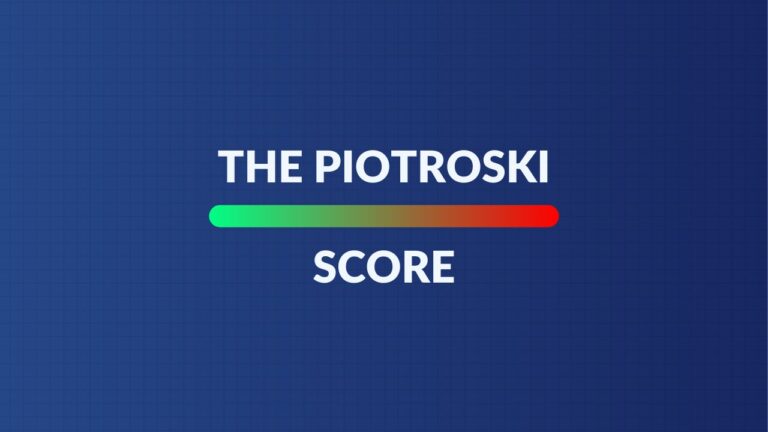Nu ($NU) – Competition in Brazil – July 20, 2024

Thank you to the subscribers who pointed out that I needed to cover the next-gen competitive landscape in more detail in the Nu deep dive. I’ll do that here for Brazil, with a breakdown of the Mexican competitive landscape coming soon. There are incumbents to mention like Itau and others, but the main competitive threat in my mind comes from other fintechs.
Mercado Libre ($MELI):
The most intimidating, established and well-funded competitor in all of its markets is Mercado Libre. Nu is ahead in terms of product suite depth and credit scale, but MELI has made financial services a key focus area going forward. It just secured needed licensing in Mexico to profitably match Nu’s thriving high yield savings product and is also quite popular in Brazil too. The market is both highly inefficient and massive. That recipe creates immense potential value. In my view, Nu is doing the best job of this, but Meli is impressive too. I candidly see both companies dominating throughout Latin America and think the market share gains will come from the Itau’s of the world rather than each other.
I think the largest differentiator for MELI over NU is MELI’s massive, scaled marketplace. There’s a reason why Nu is trying to build one itself. This marketplace means relationships with more merchants and also greater consumer scale to motivate these merchants to offer exclusive discounts. In turn, customers get unique, delightful value. These commerce tools work quite seamlessly with credit cards and other financial services offered by both. Meli can even offer more exclusive rewards for those paying with its credit product. The utility edge in this specific cross-selling and product suite area goes to MELI.
Inter & Co ($INTR):
Inter & Co is a formidable, pure-play competitor for Nu in Brazil. They have the same digitally-native footprint that enables the “say yes to everyone” approach that Nu has for its bank accounts. This allows INTR to enjoy a similarly frictionless top of funnel. They’re both trying to build superapps, with Nu being 11 years old and INTR being 30 years old. Both offer shopping, insurance and investing tools to complement the broad banking offerings. Inter & Co also has a compelling rewards program called Loop, which is delivering the same engagement, personalization and monetization uplifts that Nu’s program yields.
Interestingly, INTR also operates in the USA, which does offer a bit of evidence that Nu’s product suite may resonate in this high value market over time. There is a large, large population of Latin Americans in the states who are underserved by their banks. Go serve them.
Despite the 19 year longer operating history, INTR is a lot smaller, with 31.7 million total customers. Nu has over 100 million, and is enjoying faster rates of customer growth as well. Furthermore, Nu’s customers are far more engaged than INTR, with an 83% active customer rate vs. 55% for INTR. Nu’s quarterly revenue base is about twice the size of INTR with a 64% Y/Y growth rate vs. 37% Y/Y growth for INTR. Next to Nu, these numbers look underwhelming, but that’s a byproduct of how special and impressive Nu truly is. It’s less so due to INTR not being a serious player in the region.
Nu’s risk-adjusted net interest margin (NIM) of 9.7% is more than double INTR’s and its return on equity is also much, much higher. Both have very strong liquidity ratios and large input cost leads over incumbents, with INTR actually claiming to have a slightly lower customer acquisition cost than NU. Still, Nu’s efficiency ratio is more than 1000 bps better than INTR’s.
Both are expanding loan portfolios and PIX financing while delivering strong top line growth with margin expansion. Revenue per customer is similar for both, but when comparing the most mature cohorts for each business, Nu’s is about 50% higher. INTR trades for 17x 2024 earnings with a 2-year forward earnings CAGR of 37% expected. Nu trades for 32x 2024 earnings with a 2-year forward earnings CAGR of 49% expected. Nu’s upward earnings estimate revision trends are sharper than INTR’s.
Pag Bank ($PAGS):
Pags is another Brazilian competitor with about 31 million customers. It focuses more on payment flows than Nu does and on merchant banking. It also offers bank accounts, credit cards, cross-border service and a plethora of working capital products for small merchants.
PAGS has a formidable consumer banking division with credit cards, Pix, a loyalty program to rival Nucoin, bank accounts and more. It has a well-rounded consumer investing platform that rivals the asset diversity Nu offers. Its $5 billion deposit base and $500 million consumer credit portfolio are both a small fraction of Nu’s. Deposits grew at a robust 64% Y/Y clip as of last quarter, which actually outpaced Nu (although on a much smaller base).
PAGS has also been more timid on credit origination, with negative growth in 2023 and 0.2% Y/Y growth this past quarter. In its earnings remarks, it cites the pandemic, rising Brazil interest rates and “one of the worst credit cycles in the country” as reasons for this prudence. Going forward, it sounds like it’s going to continue accelerating growth. Nu has also been a bit timid on credit growth, but less so. It’s seemingly more confident in pricing risk across credit cohorts. That confidence means more success if they’re right, but more balance sheet risk if they’re wrong. It’s also interesting to note that the PAGS credit book is 70% secured products vs. 14% for Nu. Despite Nu leaning more heavily on unsecured personal loans, it still was comfortable delivering 50%+ volume growth Y/Y last quarter.
PAGS is 7 years older than Nu, but it would be hard to see that in the scale and profitability of side-by-side results. Nu’s revenue base is more than 4x larger than PAGS as of the most recent quarterly reports. Despite this, Nu’s 69% Y/Y growth compares quite nicely to 15% Y/Y for PAGS. PAGS also sports a 12% non-GAAP net income margin compared to 16% for Nu, while GPM for PAGS sits at 39.5% vs. 43.2% for Nu.
Others:
Neon Bank is another Brazilian competitor to keep an eye on. It’s still private, so we have very little information on its operations. This company was born from the same excessive fee and poor customer service issues that led to Nu’s explosion. Neon aims to remove financial service access friction and democratize banking for under-served customers. It offers financial planning tools to help build credit, claims to remove all banking fees and says it offers cheaper access to funding. It’s hard to verify these claims without public filings. It does a lot in payroll loans and calls 4.8 million solo entrepreneurs clients as of mid-2022. That’s a big number. It had 16 million total customers at that time. It doesn’t really pursue the affluent demographic that Nu caters to with its Ultravioleta product, but they do compete in all other client income buckets. It wasn’t profitable as of May 2022 and had raised over $700 million as of that time. Nu’s product suite is a lot broader than Neon’s, while Neon really focuses on improving traditional banking products (and payroll loans). Product diversity gives Nu a steady source of diversified fee income to help diminish reliance on solely credit for growth.
C6 is another interesting competitor. It’s backed by JP Morgan and just reached profitability this quarter on the heels of a very sharp margin inflection. Interestingly, the company has delivered that milestone by significantly pulling back on unsecured and other riskier credit while Nu leans more aggressively into originations and delivers NIM expansion. C6 focuses a bit more heavily on enterprise banking than Nu and the others do to date (although Nu is expanding there quickly). Still, it does have a strong consumer banking branch to go head-to-head with these other firms. It offers traditional banking services and some investing and lending services as well.
When the opportunity is as large, untapped and under-serviced as Brazilian financial services, there will always be competition. Others will not lay down and quit simply because Nu is winning. Nu is the most attractive company out of this group (aside from maybe MELI) in terms of growth, scale, margins, leverage, product breadth, runway, leadership, customer engagement and service. Some of the other listed firms boast some of the ingredients that make Nu special, but none put together all of the pieces quite like it can.











